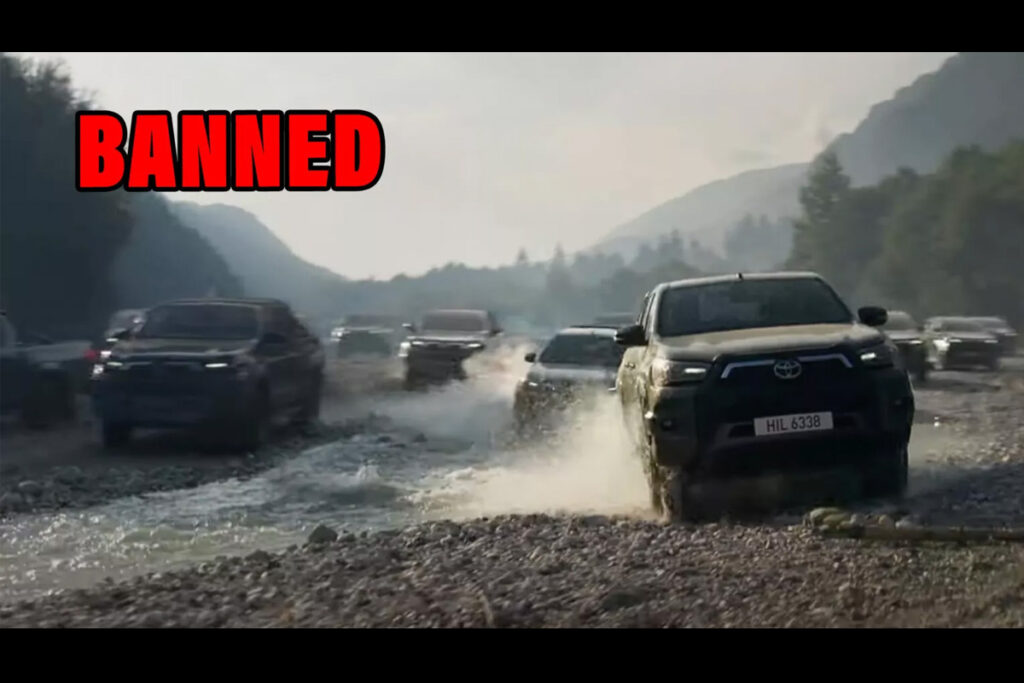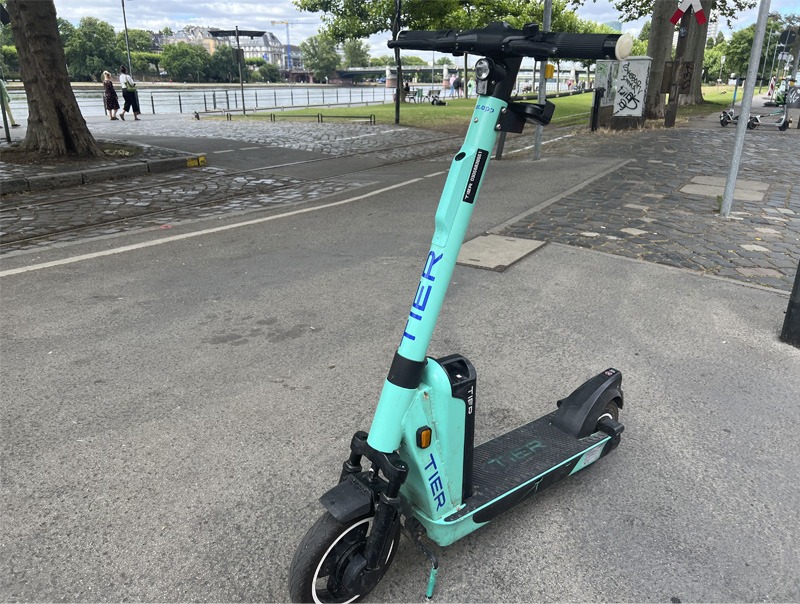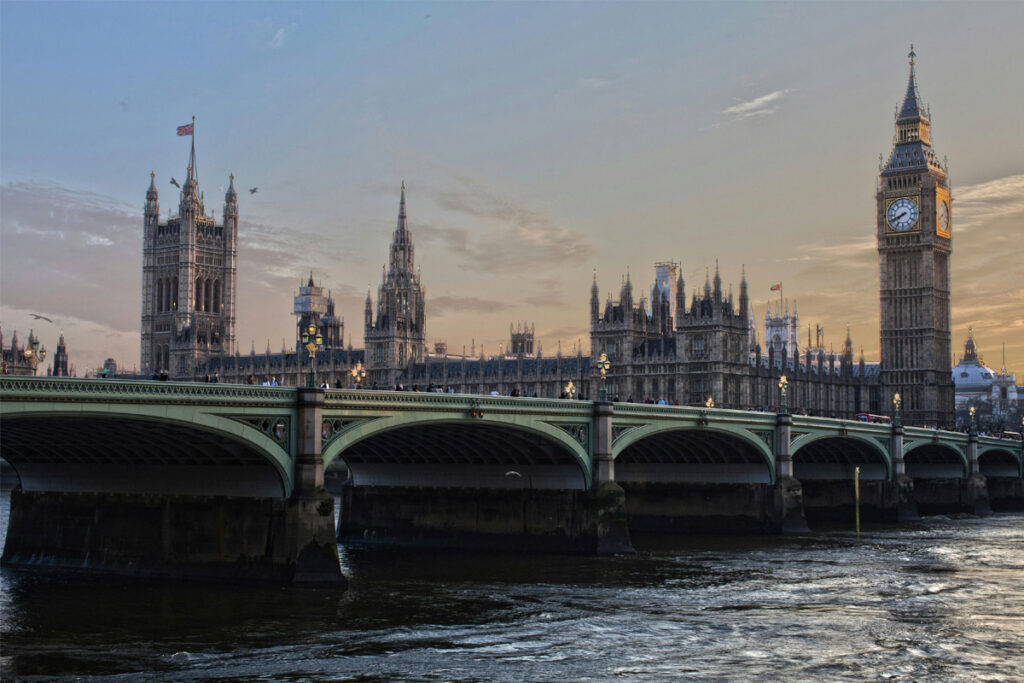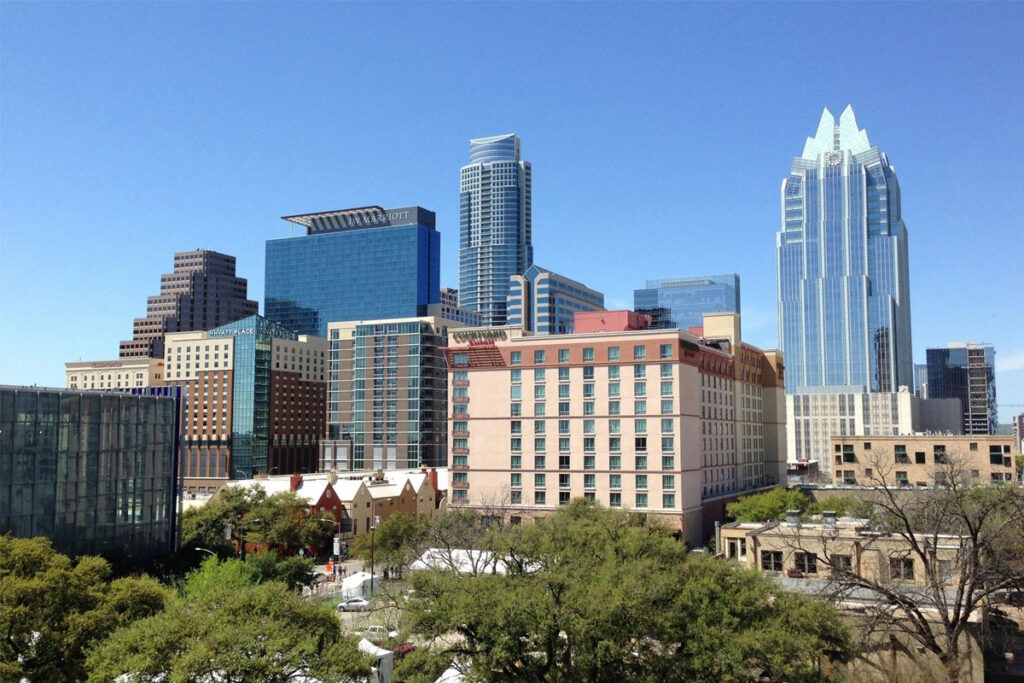Infrastructure Briefs: UK Bans Toyota Advertisement on Environmental Grounds

UK Bans Toyota Hilux Advertisement
Toyota was running an advertising campaign in the UK that was like so many that we’ve all seen before. An ‘army’ of Toyota Hilux pickup trucks (or utes as we might call them here) were shown careening through the wilderness while a voiceover describes the scene as “one of nature’s true spectacles.” Meanwhile the same campaign was run on bus shelter posters under the headline ‘Born to Roam’.
Neither ad can be shown in the UK going forward after a decision by the Advertising Standards Authority (ASA), which said they “presented and condoned the use of vehicles in a manner that disregarded their impact on nature and the environment.”
The decision is the latest in a series of environmentally focused bans by the ASA, which launched a project centred on climate change and the environment in 2020. Most of the ASA’s rulings have focused on advertisements it deemed misleading; the agency nixed ads from Lufthansa, HSBC and Unilever, among others, for what it characterized as disingenuous climate claims.
The Toyota ads, however, were banned for failing to uphold a broader standard in the UK’s advertising code: that adverts be “prepared with a sense of responsibility to consumers and to society.” This is the first ad banned by the ASA for neglecting that standard when it comes to the environment, a spokesperson said.
The ASA decided to take on the Toyota ads following complaints from campaign groups Badvertising and Adfree Cities, which regularly highlight misleading environmental ads. Veronica Wignall, co-director at Adfree Cities, said her group also complained about a part of the commercial in which the trucks speed through an urban area, though the ASA did not ban the ad on that basis. Bigger, heavier SUVs emit more pollution and have been shown to be more dangerous to pedestrians.
“They shouldn’t show this rugged exploration idea when inevitably these cars aren’t being used when people actually need a four-wheel drive,” Wignall said. SUVs “are being sold on a false promise of rugged adventure, exploiting imagery of the natural world.”
Adfree Cities is calling for a total ban on adverts for SUVs.
Most of this article comes from a longer article first published by Bloomberg News.

Stockholm Bans Fossil Fuel Advertising
In what is possibly a world first, the suburban part of Stockholm, which is the capital and largest city of Sweden, plus the surrounding region has announced a ban on all fossil fuel advertising.
From January 2026, residents of the capital and other municipalities in the most populated region of Sweden will no longer have advertisements for fossil fuels and “fossil-powered products” imposed on them in, a ruling that covers the entire public transport system, including buses, subways, regional trains and ferries.
There are discussions underway for other parts of Sweden to adopt similar policies and it is expected that the city centre of Stockholm will also follow suit.
This article was extracted from a longer article at badadverts.org

Two of Europe’s Largest Bike and Scooter Share Operators Merge
On 10th January 2024 Tier and Dott announced their merger, subject to certain conditions being met. The deal is expected to be finalised within two months.
Together, the companies generate combined revenues of €250 million (A$412 million), supporting over 125 million trips per year in more than 20 countries, with operations in major global cities including Berlin, Brussels, Dubai, Helsinki, London, Madrid, Paris, Rome, Tel Aviv and Warsaw.
In late November 2023 Tier laid off 22% of its workforce, meaning that 180 staff members lost their jobs.
The new combined entity is also raising a further €60 million (A$99 million) funding round.
Dott is the smaller of the two new partners. It is currently active in seven countries representing 40 cities. It has 40,000 scooters and 10,000 bikes and a staff of 600 employees. Dott has raised a total of €210 million (A$346 million) in equity and debt. That’s almost A$7,000 for each bike or scooter in its active fleet, suggesting that the business has been losing money.
Information for this article came from Tech Crunch and GW Prime

General Cycling and Share Scheme Use are Both Up in London, as Share e-Bikes to Triple.
2023 saw London double down on its commitments to green policy and active travel. With more bike lanes and low-traffic neighbourhoods implemented across the city last year, and the ultra low emission (Ulez) zone expanded across all London boroughs, there are mounting disincentives for travelling by car.
The outcome has been both clear and significant. The number of daily cycle journeys in London increased to 1.26 million in 2023, up by 6.3 per cent since 2022. Meanwhile bike and scooter share operator Lime’s trips in London have increased by an average of more than 10 per cent each month since 2019. In total 1.25 million people have used one of the vehicles. Based upon their research which 40% of Lime journeys are for commuting.
Lime also claims that 20% of their riders had never cycled before they started using Lime e-bikes. Their average rider age is 33, with 25% aged over 40. Just over twice as many males ride than females.
Meanwhile Transport for London is more than tripling the number of e-bikes in their share scheme from 600 to 2,000. The 2,000 bikes are available at docking stations around London, 24 hours a day, seven days a week.
Transport for London says more than 750,000 e-bike trips have been taken since it offered the scheme in 2022.
The move is part of Mayor Sadiq Khan’s vision of “making active travel around the city as accessible as possible”.
The expansion of the public e-bike fleet will be complemented by a new pricing structure, which will make it cheaper to use the scheme.
Transport for London is introducing a new £3 (A$5.80) day pass that allows for unlimited journeys of 30 minutes or less all day. Longer trips will cost users an additional £1 (A$1.90) per half hour. These rates are substantially lower than Australian bicycle share operators, who are private companies needing to make a profit, are currently charging.
London’s bicycle path network has grown from 90km in 2016 to 352km today. Meanwhile, the proportion of Londoners living within 400 metres of the network has ballooned from an estimated 5% in 2016 to almost 25%.
Information for parts this article was first published in Smart Cities World and on bicyclenetwork.com.au.

Austin Texas Approves US$20 million to Fully Electrify its Bikeshare System
Austin Texas has long been the ‘black sheep’ of Texas cities compared to its larger siblings of Houston and Dallas. Austin is the state capital of Texas, but much smaller than the other two cities, having a greater metro area population of approximately 2.4 million.
For micromobility and liveable city advocates, that’s a good thing. Whereas the two largest Texas cities are totally car dominated and still only making token efforts to change, Austin has been progressively improving its infrastructure to be safer for all modes of active transport. This makes them an outlier in the conservative state of Texas, a badge that most of their citizens wear with pride. Their informal motto used in popular culture is “Keep Austin Weird”.
On Monday 29th January 2024 Capital Metro the government agency that owns Austin’s bike share system announced that would invest US$20 million (A$30.6 million) to electrify the entire fleet, which consists of 800 bicycles and 80 docking stations.
Austin’s bikeshare system dates back to 2012 when it was founded by Trek Bicycles as one of their many BCycle systems.
They’re also planning to upgrade their operating software and expand the fleet.
“Ideally, the goal is to expand it to almost three times the size of what it is, but that is why we are going through the analysis to figure out where to put those new stations,” said Sara Sanford of Capital Metro.
Capital Metro also wants a seamless integration of the bike stations with Austin’s bus and light rail networks.
Some of this article was first published at cbsaustin.com

Valencia’s Eight Year Transformation Catalyst Honoured
Over the past eight years, an Italian has revolutionized the mobility of the Spanish city, which was awarded the European Green Capital Award 2024 for achieving ambitious goals in the area of environmental protection.
“Freedom is not about being able to drive everywhere, as some say. Freedom is about being able to go anywhere without a car.”
These words, spoken by Janette Sadik-Khan, a leading expert in global transportation and urban transformation, inspired Giuseppe Grezzi. The man who, over the past eight years, has revolutionized mobility in Valencia. Today 75% of its roads have 30 km/h speed limit, and 50 km/h limit on the remaining roads. Since his arrival, the use of bike lanes has increased by more than 200%.
Born in 1973 in Latronico, Basilicata, Grezzi was Valencia’s councillor for sustainable mobility from 2015 to June 2023, while also serving as president of the local transport company.
Giuseppe said, “In 2015 Valencia was a city without a sustainable mobility project. With its 800,000 inhabitants over 135 km2, it is the third largest city in Spain after Madrid and Barcelona. It has a centre with very narrow streets. And back in 2015 these streets and the rest of the city were invaded by cars. There was no bike lane network, many accidents occurred due to excessive traffic, and to make matters worse, the public transport company was almost bankrupt.”
“We set 30 km/h speed limit throughout the historic centre. With Mayor Joan Ribó Canut, we wanted to send out a strong and clear message to citizens that it was time to start moving in a sustainable and safe way, changing ingrained habits. In introducing such radical change, actions matter but so do words: that was the reason why the Traffic and Transport Department was renamed Sustainable Mobility Department. Similarly, we went from the 2010 Circulation Ordinance to the 2019 Mobility Ordinance.
We went on to remove, one by one, the advantages of using the car instead of other means of transportation. In order to change the “I move faster by car and therefore reach my destination sooner” paradigm we worked on traffic light synchronisation, for instance, so that speedy driving would cause the loss of the so-called ‘green wave’, which is normally caught by car drivers by increasing their speed. We also limited parking possibilities in the city centre.”
“We immediately started closing the town square to cars on a Sunday and opening it to citizens, welcoming various activities (local agriculture market, paella festival, etc.) They said that no one would come to the centre without using their car. After two months, we started doing it every week because the people asked us to. So we realised that the square could become permanently pedestrianised. This was a project we completed four years later, slightly behind schedule due to Covid.
“The bus timetable of 23 lines was extended until late at night. They run almost 24 hours a day, since 2016 more than 300 new buses have been introduced, 300 drivers have been hired and 900 bus stops have been set up. Near bus stations and bus stops, citizens also have bicycle parking spaces and can access sharing services.
“To encourage safe routes to school, between 2020 and 2022, 2,182 m2 of pedestrian areas around 13 schools were reclaimed.
“In 2015, Valencia had 123 km of bicycle lanes, in 2022 190 km. That’s a 50%-increase. But the most interesting figure was the increase in the use of bicycles: +214%, especially in the 5km ring around the historic centre that was opened in 2017.
“Bicycle lanes must be protected from the rest of the road. Those just marked with paint I don’t ever consider them as bicycle lanes. They are only bicycle routes. All our lanes are at least 2.5 m wide, bidirectional, and protected. It is no coincidence that cycling has increased from 30% to 40% in the children, women, and family categories. Traffic light synchronisation has enabled us to favour bicycle transit. This is how over just a few years Valencia has become one of the three best cycling cities in Spain, leaping from the bottom of the ranking all the way up to the podium.”
How To Achieve Change
When considering the political and cultural challenges of implementing so much change over the past eight years, Giuseppe reflected, “Resistance to change is always very strong. Once we took office, we immediately set up a consultation table open to citizens, who must always be consulted, even if the decisions are to be taken by those in office. In these cases, making the population decide can be wrong and counterproductive: if you hold a referendum on mobility, you will almost certainly not succeed in changing anything.
Resistance to change is inherent in human nature, feelings are easily manipulated and it is hard to explain why mobility must change or why parking spaces should be eliminated. Then there are also false myths, such as the one that made shop owners believe for years that they could only do business if there were cars on the streets. This is not true and we have proved it. After all, in the 1970s Amsterdam was full of cars, today, as is well known, it is full of bicycles, perhaps too many (laughs), but it is a much safer and more efficient city. Those in power must cultivate a medium-to-long term vision and decide what is best to do.”
A longer version of this article was first published on domusweb.it
